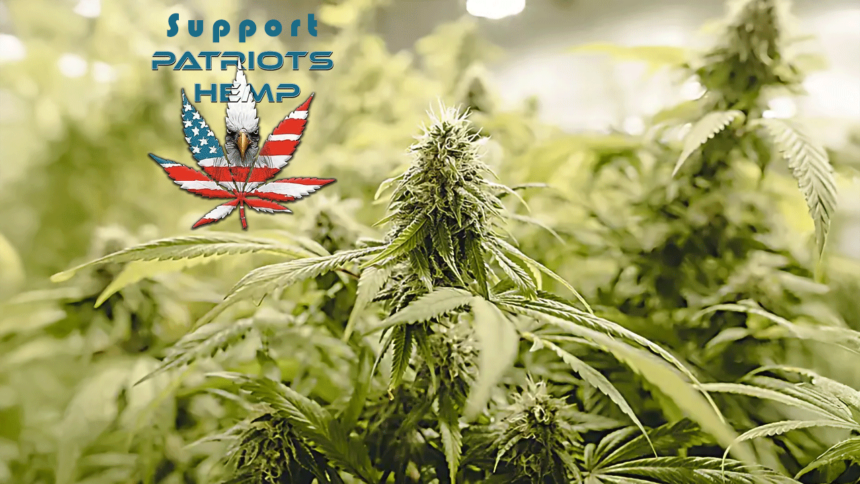Among U.S. workers, those in the food service and hospitality industries are some of the most common consumers of marijuana, according to a new analysis of five years’ worth of federal health survey data by federal researchers from the Centers for Disease Control and Prevention (CDC).
People in arts, design, entertainment, sports and media occupations also reported comparatively high rates of past-month cannabis use, as did workers in construction and extraction.
Among those least likely to report marijuana use, meanwhile, were law enforcement, health care providers and workers in libraries and education.
The peer-reviewed report, published in the American Journal of Public Health (AJPH), assessed data from CDC’s Behavioral Risk Factor Surveillance System (BRFSS) from 2016 to 2020. The survey, which asks about health conditions and behaviors, began asking respondents about employment and occupation status in 2013.
Researchers limited responses to those from people who worked for wages, were self-employed or had been out of work for under a year, ultimately including data from 128,615 people in 15 states (Alaska, Colorado, Florida, Georgia, Idaho, Illinois, Maryland, Minnesota, Mississippi, Montana, New Hampshire, North Dakota, Rhode Island, South Carolina and Tennessee).
“We found wide variation in cannabis use across industries and occupations, ranging from 0.5% among law enforcement workers to 29.7% among tour and travel guides.”
By industry, the three with the highest reported marijuana-use prevalences “were accommodation and food services (20.7%); arts, entertainment, and recreation (17.5%); and construction (15.9%),” the study says. “The 3 industry groups with the lowest prevalence were management of companies and enterprises (5.4%); public administration (3.7%); and utilities (3.4%).”
Analyzed by occupation group rather than industry, the three groups with the highest prevalence “were food preparation and serving related (21.9%); arts, design, entertainment, sports, and media (17.0%); and construction and extraction (15.5%),” it continues. “The 3 occupation groups with the lowest prevalence were education, training, and library (5.7%); health care practitioners and technical (4.7%); and protective services (4.4%).”
“The overall weighted prevalence of past 30-day cannabis use in 15 states was approximately 10.7% for workers aged 18 years or older,” concluded the CDC authors, who are based in Colorado and Washington State. They noted the findings are about on par with estimates from the 2021 National Survey of Drug Use and Health, which found a 13.0 percent past-month use rate among people 12 and older.
“Our lower estimates might be a result of restricting the analysis to employed (or recently employed) adults,” the two researchers noted. “Furthermore, the NSDUH sample included 19 states that had legalized cannabis for nonmedical use. Only 2 of 15 states in our sample had legalized nonmedical cannabis during the full study period.”
The results provide what the pair called “baseline data and on cannabis use by industry and occupation, which can help frame future policy discussions and research.”
In terms of public policy, they note that the findings could have implications for workplace drug policies, reducing adverse impacts of cannabis consumption and providing accurate public information to workers and employers.
“We found above-average prevalence of cannabis use in several industry and occupation groups that historically have high rates of injuries and fatalities, such as forestry and logging; fishing, hunting, and trapping; and construction of buildings.”
“Despite mixed evidence for an association between cannabis and work-related injury in the literature, potential safety risks related to cannabis use are still a concern, especially for safety-sensitive occupations or tasks such as driving,” authors wrote. “More research is needed to understand factors driving cannabis use in high-risk industries and occupations. Additionally, more information is needed to discern how much of the measured cannabis use results in impairment on the job, since for many workers, some or all cannabis use may occur away from work.”
The report also emphasizes that more than a fifth (21 percent) of workers who use marijuana say they do so for medical purposes, encouraging employers and employees to “work together to ensure that workplace impairment resulting from cannabis use does not result in injuries.”
“Examples could include outlining expectations around cannabis use in proximity to work generally, establishing a list of high-risk job tasks that should not be done at any level of impairment, or establishing a level of workplace trust and security so that workers can voluntarily opt out of performing certain tasks if they do not think they can do them safely,” the study says. “The primary goal for both employers and employees should be to limit the risk of injury while maintaining productivity.”
Results of a similar study published in the International Review of Psychiatry in 2018 looked at past-year marijuana use and found that food services, education and health as well as construction and mining workers had the highest reported cannabis consumption rates.
“One key difference between the user groups is the higher percentage of medical cannabis users in the construction and mining industries,” that study noted. “This is likely due to the higher injury rates in these industries: construction and mining work require physical stamina, often involve irregular schedules, and expose workers to weather, dangerous tools, and equipment.”
It similarly recognized that there was conflicting research about marijuana use in those industries, with some arguing that frequent use can result in increased workplace dangers and others contending that the therapeutic use of cannabis “addresses pain and other health problems…that often result from work-related injuries.” The latter point aligned with a study released the same year showing “evidence that legalizing medical marijuana improved workplace safety.”
The issue of employee drug testing and workplace safety is especially common in areas where state-level legalization collide with the ongoing federal prohibition of marijuana. The conflict arose in a recent federal court case from Alaska Airlines in which the company sought and failed to overturn an earlier arbitration order reinstating the employment of an aircraft maintenance technician whom the company fired over a positive test for THC.
The evolving legal landscape around cannabis in the United States has complicated drug testing standards, especially in federally regulated sectors, and has encouraged employers and policymakers alike to reconsider when and how people are screened for marijuana.
In August, Marijuana Moment published a document behind a decision by Home Depot, one of the largest employers in the United States, to remove cannabis from screening panels entirely and stop pre-employment drug testing of most of its workers.
In 2021, corporate behemoth Amazon announced that it would stop testing many of its workers for marijuana—and also begin lobbying the federal government for cannabis legalization.
A number of states have also passed legislation that limits or prevents drug testing of employees for marijuana. Earlier this year, for example, new worker protections took effect in both California and Washington State.
In California, employers are now prohibited from asking job applicants about past cannabis use, and most are barred from penalizing employees over lawful use of marijuana outside of the job. The Washington State law, meanwhile, protects workers from facing employment discrimination during the hiring process over their lawful use of cannabis. It does not protect current workers from discipline or firing for out-of-work use, however.
In New Jersey, the state’s policy against drug testing public employees has spiraled into lawsuits over whether police in Jersey City can be fired for testing positive for THC. The state’s attorney general has advised departments not to test officers for off-duty cannabis use following legalization, but Jersey City’s mayor has publicly defied that policy—a move officers claim is motivated by the mayor’s political ambitions.
As marijuana legalization began to take effect in Ohio last year Cleveland Mayor Justin M. Bibb (D) announced that the city has “modernized” its drug testing policies for applicants for city jobs, eliminating “antiquated language around pre-employment marijuana testing that has previously hindered hiring efforts.”
A Washington, D.C. law went into effect last July that bans most private workplaces from firing or otherwise punishing employees for marijuana use during non-work hours.
Michigan officials also approved changes to the state’s employment policy last year, making it so applicants for most government jobs will no longer be subject to pre-employment drug testing for marijuana.
New York also provides broader employment protections for adults who legally use cannabis during off-hours and away from work.
A number of North American sports leagues have also revised their stances on cannabis in recent years. Last year, for example, the National Basketball Association (NBA) removed marijuana from its banned substances list and allowed players to invest in cannabis companies. The league had reportedly already stopped testing players for cannabis use for years at that point.
Major League Baseball (MLB), meanwhile, took marijuana off its banned substances list in 2019 and some baseball teams—including the Chicago Cubs and Kansas City Royals—have since partnered with CBD companies. In 2022, MLB itself signed a CBD company to serve as the league’s first-ever cannabis sponsor.
While the National Football League (NFL) and its players union agreed to end the practice of suspending players over marijuana or other drugs as part of a collective bargaining agreement in 2020, it has continued to fine players over positive THC tests. For the first through third positive test, the fine is half a week’s salary; a fourth and each subsequent positive test is punishable by a fine equal to three week’s salary.
Other sports leagues and governing bodies have also adopted revised marijuana policies as the state-level cannabis legalization movement continues to spread.
The National Collegiate Athletic Association (NCAA), for example, recently voted to remove marijuana from its banned substances list for Division I players, a change that took effect in June.
The Ultimate Fighting Championship (UFC) announced in December that it was formally removing marijuana from its newly modified banned substances list for athletes, also building on an earlier reform.
However, ahead of a UFC event in February, a California athletics commission said they could still face penalties under state rules for testing positive for THC over a certain limit, as the state body’s policy is based around World Anti-Doping Agency (WADA) guidance.
Nevada sports regulators voted last year to send a proposed regulatory amendment to the governor that would protect athletes from being penalized over using or possessing marijuana in compliance with state law.
While advocates have welcomed these changes, there’s been criticism of WADA over its ongoing cannabis ban. Members of a panel within the agency said in an opinion piece last August that marijuana use by athletes violates the “spirit of sport,” making them unfit role models whose potential impairment could put others at risk.
Advocates strongly urged WADA to enact a reform after U.S. runner Sha’Carri Richardson was suspended from participating in Olympics events due to a positive THC test in 2021.
Following that suspension, the U.S. Anti-Doping Agency (USADA) said that the international rules on marijuana “must change,” the White House and President Joe Biden himself signaled that it was time for new policies and congressional lawmakers amplified that message.
During this year’s Olympics in Paris, the head of USADA blasted the “unfair” ban on marijuana for athletes competing in international sport events.




















